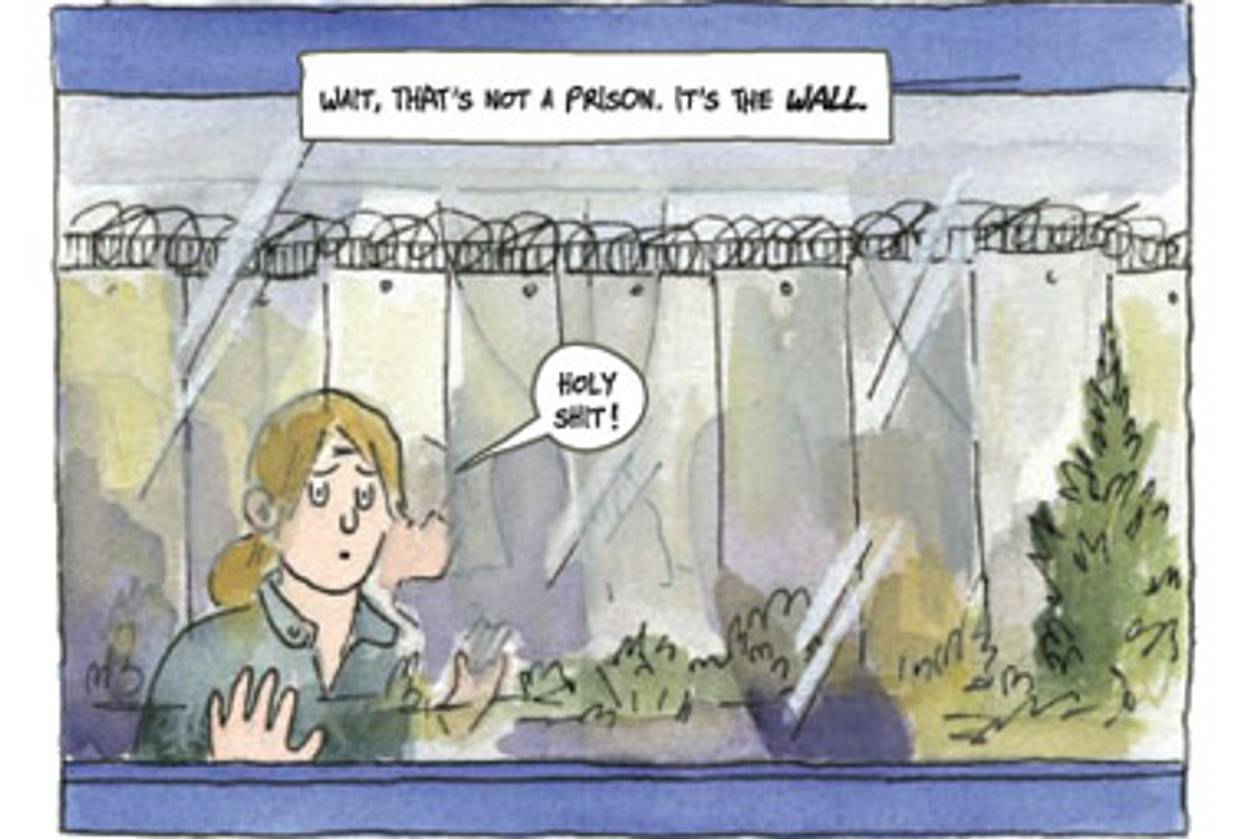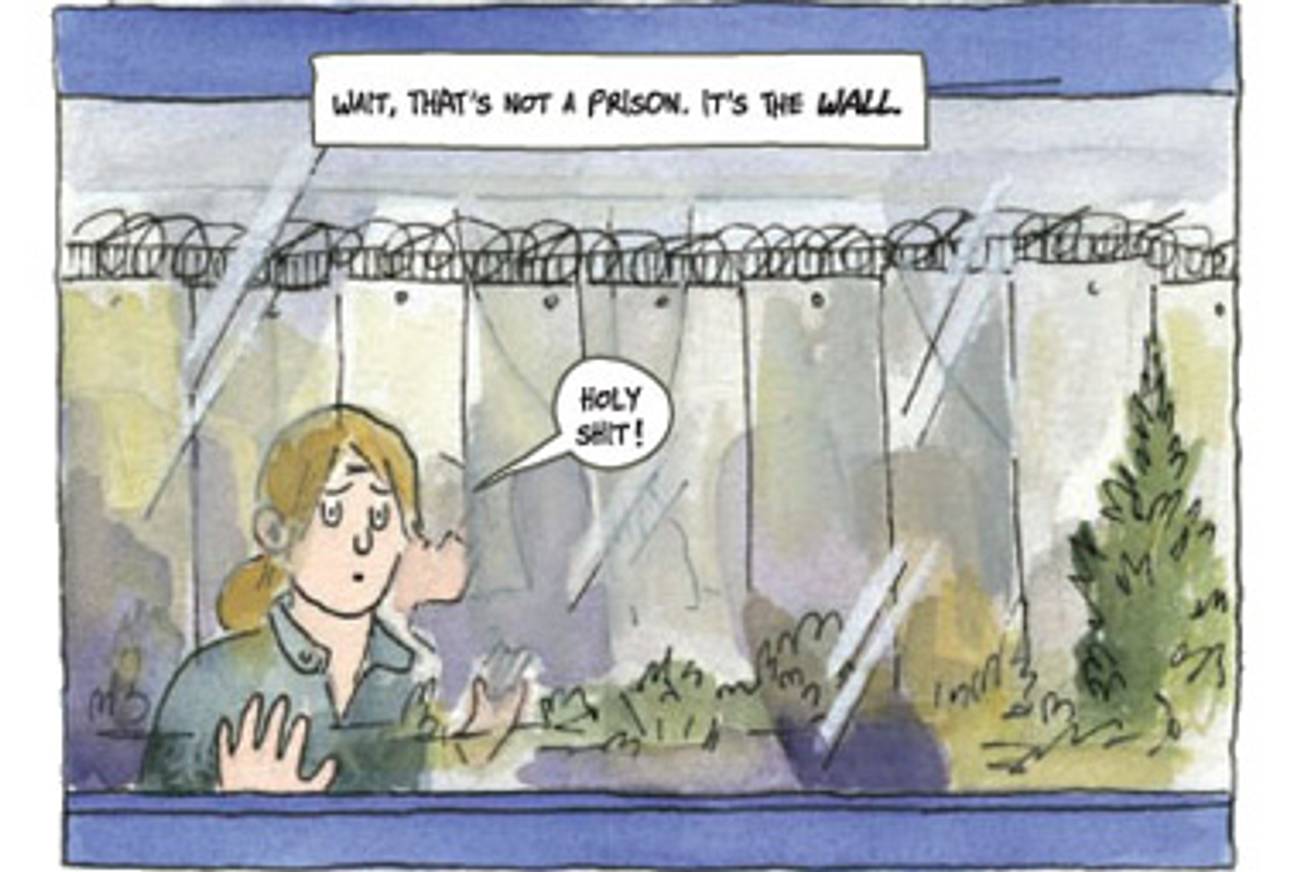The Others
Several new books for children and young adults ask us to see the world through Palestinian kids’ eyes




A handful of books published this year encourage young readers to see both sides of the Israeli-Palestinian conflict. Despite the tsimmis last time I looked at a children’s book on the topic, let’s dive in again.
First up: Where the Streets Had a Name by Randa Abdel-Fattah, a young Australian author of Palestinian-Egyptian heritage. (Full disclosure: Tablet Magazine’s Liel Leibovitz helped fact-check the book, which his wife, an executive editor at Scholastic, published. I didn’t know this when I ordered it.) It’s the story of 13-year-old Haayat, growing up in Bethlehem in 2004—her family moved there after their farm in Beit Sahour was leveled for a new settler road. After losing his farm, her Baba changed. “The evidence of his demolition doesn’t show,” she says. “The rubble and ruins are inside him.” Haayat’s wounds are right on the surface—her face is badly scarred. Why? How? We don’t find out until late in the book.
Haayat’s beloved grandmother, Sitti Zeynab, has suffered as well. For generations, her family lived in what is now West Jerusalem; they fled from the Israeli army in the war of 1948. Refugees, they lived in exile until after 1967’s Six-Day War. Upon their return, they found a Jewish family living in their house. The Jewish woman lost everything—her mother, her father, her twin sister—in a concentration camp. “I’m sorry for what happened to your family and your people,” Sitti Zeynab told her. “But why must we be punished?“ The woman’s husband replied, “Go to Egypt or Jordan or Syria. You have many countries from which to choose.” Haayat’s uncle cried, “But this is our homeland! Would you ask an Englishman to move to America or Australia because they speak English in those countries too? Palestine is our home, not Egypt or Syria!”
When Sitti Zeynab takes ill, Haayat is determined to save her by letting her touch the earth of her village once more. So, Haayat and her best pal, Samy, a soccer-loving Christian hooligan who has emotional scars of his own, take an empty hummus jar on a Quixotic quest: to get some Jerusalem dirt. Jerusalem is only six miles from Bethlehem, but it might as well be a world away. What follows is a picaresque adventure of checkpoints and curfews, of buses, taxis, hiking, and wall-climbing. Our young heroes meet a variety of types—Jewish, Muslim, and Christian—and learn more about the fractured land they inhabit.
The book has a lot of humor (farts abound, which will delight the target audience—and, OK, me too) to leaven the upsetting stuff. And not all Israelis are depicted as evil. But too many of the book’s characters are merely sketches, and Haayat’s voice is wildly inconsistent. Sometimes it’s over-the-top lyrical, as when she’s describing the beauty of the land and its people. Sometimes it’s so literal and unimaginative, she seems like a dimwit. When Sitti Zeynab compares her sense of loss to “heartburn after a big meal,” which “burns inside and nothing you do takes the sensation away,” Haayat suggests drinking a glass of milk. This is the same kid who describes “the ubiquitous Wall, twisting and turning, devouring the landscape”? For some reason, florid, self-conscious prose seems to afflict many books about growing up in the West Bank. Abdel-Fattah’s earlier young-adult novel, about a girl in suburban Melbourne, Australia, who suddenly chooses to wear hijab to high school, has no such problem. (It also has the awesome title Does My Head Look Big in This?)
If Where the Streets Had a Name is a good choice for a middle-grade-to-young-adult audience (and it is), Sharing Our Homeland: Palestinian and Jewish Children at Summer Peace Camp is a good one for younger kids. It’s an extended photo essay (the pictures are by Cindy Karp; the words are by Trish Marx) about a summer camp for Israeli Jewish and Israeli Palestinian kids. Givat Haviva, an Israeli nonprofit peace organization, runs the two-week camp. Every summer 200 kids come together to learn about each other’s culture, practice respectful dialogue, and do the fun stuff of camp—crafts, swimming, sports, and song. Like Where the Streets Had a Name, Sharing Our Homeland doesn’t offer any easy answers, just reflections on the importance of trying to see the Other as a fellow human being.
For older teenage and younger 20-something readers, there’s How To Understand Israel in 60 Days or Less, cartoonist Sarah Glidden’s graphic memoir of a Birthright Israel tour. Glidden approaches the all-expenses-paid trip with the attitude of a somewhat entitled young lefty American—she cynically expects a nonstop barrage of pro-Israel propaganda. She’s surprised to find that Birthright offers her a nuanced portrait of a complicated country. She meets people on the left and on the right; she also works hard to learn the region’s history. Glidden is as tough on herself as she is on anyone else—she makes a snotty remark about pushy Russians to an Israeli who turns out to be a recent Russian immigrant; she realizes she’s misjudged some of her tripmates. She’s clear-eyed about her own neuroses and moral failings, and she’s a very thoughtful and endearing—and often funny—tour guide. The panels of the book are awash in pretty watercolors. I even learned something new about the Masada story! (I didn’t know the role of Shmarya Guttman, a young Zionist who in 1933 figured out how to market the destination to the Jewish National Committee as part of a stirring identity narrative.) Glidden doesn’t come to any sweeping conclusions about the tense reality in Israel, referred to as the Matsav (sense a theme here?), but she stops being so quick to judge Israel and find it wanting.
What all three books have in common is the insistence that we not lump an entire people into one undifferentiated mass we label the Enemy. This may seem like a naïve answer to a complex set of questions. But the ability to empathize goes a long way. “Although the fundamental political issues can only be resolved by the parties to the conflict, widespread efforts to promote pluralism and tolerance will begin to lay the groundwork for a future generation that can come to the negotiating table with open hands instead of clenched fists,” the author Robert A. Friedman recently wrote in Foreign Policy Digest. “Groups such as Seeds of Peace, which empowers young leaders from regions of conflict with the leadership skills required to advance reconciliation and coexistence, are needed more than ever. When mutual trust and respect are established at an early age, these bonds can last a lifetime.”
Too bad so few adults have gotten the memo. Queen Rania of Jordan (whose parents were from the West Bank) recently co-authored a picture book called The Sandwich Swap, about two little girls who fight over the perceived yuckiness of their respective lunches (hummus vs. PBJ). The book preaches multiculturalism and open-mindedness and was launched with a reading at the United Nations. But the queen has turned down several offers to publish a Hebrew version. She might have taken a page from Sitti Zeynab: “Nobody has realized that laughter sounds the same,” she tells Haayat, “whether it shakes its way out of an Israeli or a Palestinian.”
Marjorie Ingall is a columnist for Tablet Magazine, and author of Mamaleh Knows Best: What Jewish Mothers Do to Raise Successful, Creative, Empathetic, Independent Children.
Marjorie Ingall is a former columnist for Tablet, the author of Mamaleh Knows Best, and a frequent contributor to the New York Times Book Review.